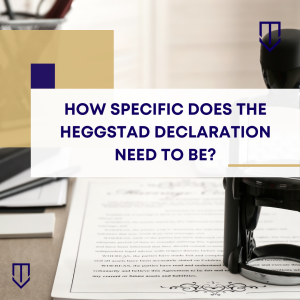 A Heggstad petition is a unique legal maneuver in probate court that a party can use to establish the existence of a trust. Normally, if a party wants to show that the property at issue is in a family trust, they have to produce evidence of a transfer of the property into the trust. (Prob. Code § 15200 (b).) This is usually accomplished with a deed, which conveys the property from the owners (the “settlors”) to the trustees of the trust.
A Heggstad petition is a unique legal maneuver in probate court that a party can use to establish the existence of a trust. Normally, if a party wants to show that the property at issue is in a family trust, they have to produce evidence of a transfer of the property into the trust. (Prob. Code § 15200 (b).) This is usually accomplished with a deed, which conveys the property from the owners (the “settlors”) to the trustees of the trust.
But what happens when the settlor and trustee are the same person? That’s where Heggstad comes in. Under Heggstad, no formal transfer of the property by deed is needed. Instead, a written declaration of trust by the owner of the property is enough, provided the owner names themself as the sole trustee. (Carne v. Worthington (2016) 246 Cal.App.4th 548, 559.)
Nonetheless, a successful Heggstad petition still requires proper planning and execution. A faulty property description, for instance, can doom the action from the outset. At Underwood Law firm, our attorneys know how tough a situation like this can be. Thankfully, our attorneys are well-versed in estate planning, and we know the best ways to tackle the disputes that accompany property in probate. Our team has the legal acumen and skills necessary to help you achieve your litigation goals.
 California Partition Law Blog
California Partition Law Blog

